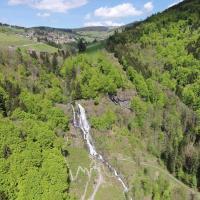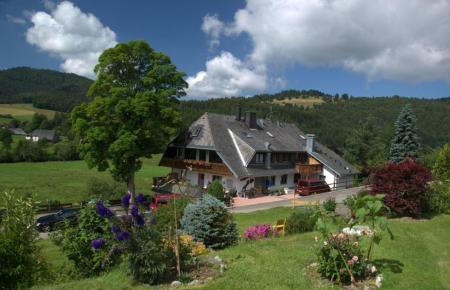In the Black Forest, tinder or fire sponge manufacture went hand in hand with the brush industry in the days when no one knew anything about matches. At that time, a linen rag soaked in oil was used to make a fire, and it was lying in a tin can. Over the can, a flint was held and sparks were struck with steel. The tinder then took the place of the linen cloth.
The tinder was also used as a hemostatic agent. Due to its softness and lightness, it was also suitable for making hats, which were often worn in the country. A tinder of special size even became a robe for the bishop of Freiburg manufactured. The tinder comes from the holey fungus (Polyporus fomentarius) or the willow sponge (Polyporus ignarius), which parasitizes on beeches, oaks, linden, willow, ash and other trees and was often found in the Black Forest and the Eifel in the past. When these areas were no longer productive, this raw material was allowed to come from Hungary, Transylvania and Southern Slavia in bales of four hundredweight each. The sponge produced pieces the size of a fist, even quite sizeable plates.
In the years 1811 to 1814 there were 4 to 6 “Zundelmacher” in Todtnau, but this branch of industry was not operated on a factory basis until later. Of the three tinder factories in Baden, two were in Todtnau. One was founded by Franz Josef Faller in 1827, the other by Konrad Kirner in 1834. They did brisk business and gave many residents a reasonable income. They guarded the secret of the preparation with great trepidation. The dry, hard, solid mass was softened by long cooking in a lye and cooked in hydrochloric acid. The pieces intended to stop bleeding were not soaked. The tinder was colored darker according to your wishes and taste. A piece processed in this way was then often enlarged tenfold by tapping, giving it a spongy appearance, dried in the sun or in the oven and then kneaded by hand and then pulled. Depending on requirements, the pieces were cut into thin strips or made into caps or hats without a seam. The value of the piece depended on its size, sponginess, softness and shape. The Kirner tinder factory was run by the sons Konrad, Sebastian and Michael Kirner; the Faller factory existed until Franz Josef Faller's death. One of the Todtnau tinder factories produced 1871 hundredweight of tinder in 750. Then matchmaking put tinder on the extinction list. Around 1895 there were no more tinder factories in Todtnau.”
To commemorate the tinder making in 1960, the clique of fools of the "Todtnauer Zundelmacher" founded.













